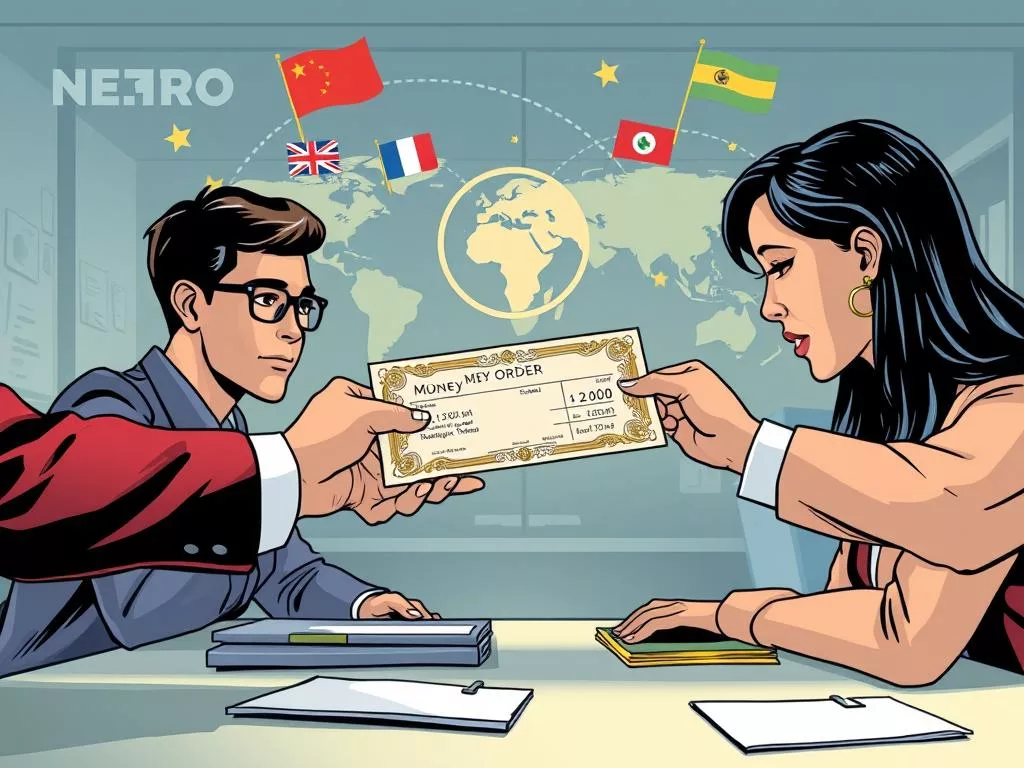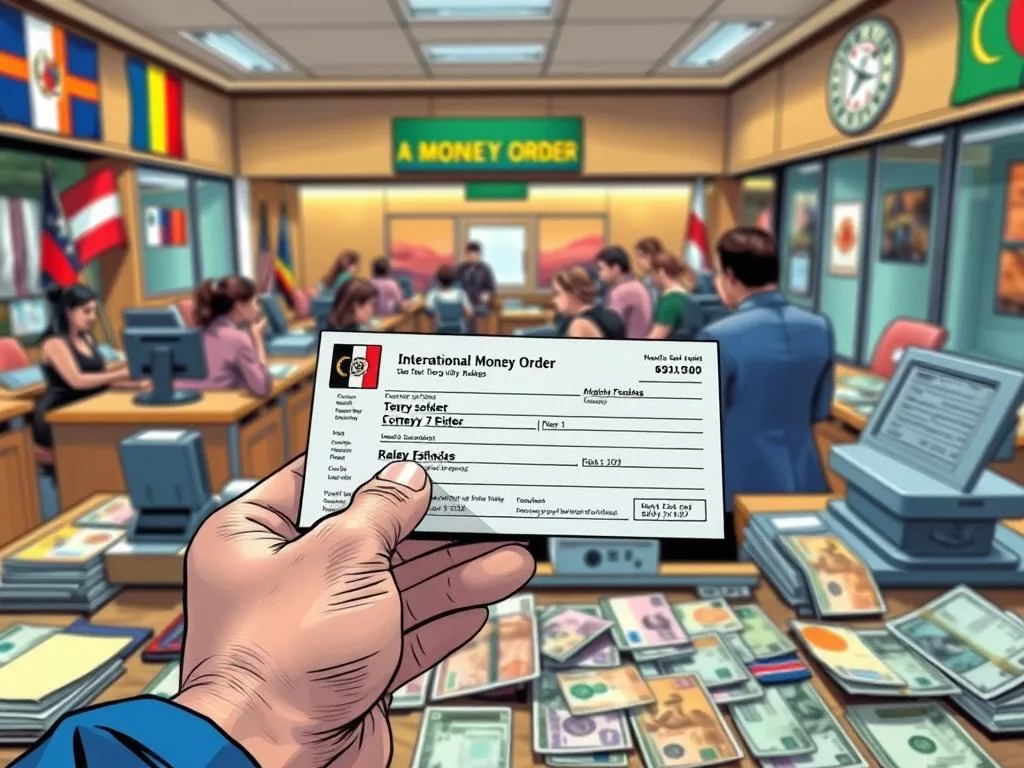Are you exploring ways to send money across borders? International money orders are a safe choice, perfect for those without bank accounts. In the US, big names like the US Postal Service, Western Union, and MoneyGram offer this service. They provide a secure way to send money, unlike cash.
These money orders act like payment certificates. They can be cashed by the recipient, making it easier to send money worldwide.
But, these methods can be slow and pricey. Fees and bad exchange rates increase the cost. For example, international wire transfers might take up to two weeks. PayPal can charge up to 5% for these transfers.
Digital options are becoming more popular because of these issues. Services like Wise offer faster, cheaper, and easier online solutions. They have clear fees and exchange rates in real-time. Wise uses the mid-market rate and charges a small fee plus a percentage of the amount converted. You can learn more about international money orders and their alternatives via Wise’s detailed guide.
Understanding International Money Orders
International money orders are a safe way to send money abroad. They are bought for a set amount and mailed to the recipient. The recipient can then exchange it for cash. This method is safer than mailing cash because it requires ID to cash but doesn’t need a bank account.
You can buy postal money orders from banks, post offices, and some retail stores. Big banks like Wells Fargo, Chase, and US Bank offer this service. The usual limit for a money order is 1,000 USD.
The cost of a money order starts around $10 but can go up based on where it’s going and fees. Western Union lets you send up to 3,000 USD without ID and up to 50,000 USD with ID. But, remember, exchange rates can change the amount the recipient gets.

USPS money orders are usually capped at $700 for most places. They’re often used for sending amounts under 1,000 USD. In some countries, cashing these can be hard because of high fees and slow processing. It’s important to compare costs and exchange rates, as providers like Western Union make money from these differences.
Canceling or refunding international money orders can be costly and take over 30 days. Also, these orders need to be delivered in person before they can be cashed. Despite these challenges, the security of safe money orders makes them a good choice for sending money.
| Provider | Limits | Fees | Additional Costs |
|---|---|---|---|
| Western Union | 3,000 USD without ID, 50,000 USD with ID | 0 – 15 USD + 15 USD research fee | Exchange rate variations |
| USPS | 700 USD | Varies (0 – 20.75 USD) | Slow processing times |
| Banks (Wells Fargo, Chase) | 1,000 USD typical limit | Starting at 10 USD | Additional cashing fees |
Guide to International Money Orders: Step-by-Step Process
Buying money orders is a safe way to send money instead of cash or personal checks. You can find them at banks, credit unions, U.S. Post Offices, and more. Make sure to fill out the money order correctly. The cost is usually up to $5, with USPS charging $2 for amounts up to $500.
Money orders are cheaper than wire transfers and don’t need a bank account. First, check if the recipient’s country accepts them. Here’s how to start:
- Compare fees at different places like post offices and banks.
- Get the recipient’s full name and address ready.
- Fill out the money order form with your details carefully.
- Send the money order by mail with tracking.
When using money orders, be careful. You can’t send more than $1,000 at a time. For bigger amounts, you might need to use several money orders. Walmart offers them for up to $1, which is very cheap. Banks usually charge around $5.

When the recipient gets the money order, they need to sign it and show ID to cash it. You can cash money orders at post offices and banks. Remember, some banks might charge extra fees for non-customers.
For detailed steps on filling out money orders, check out a full guide.
Money orders have some limits, like a $1,000 cap and needing to be requested in person. But, they’re safer than cash and don’t need a bank account. They’re a good, affordable choice for secure payments.
Top Alternatives to International Money Orders
Modern digital payment services offer big advantages over traditional money orders. They make sending money abroad quicker and cheaper. Services like Wise and Currencies Direct cut out the high fees of old-school money orders. For example, Wise money transfer uses real-time exchange rates and has low, clear fees.
USPS money orders cost $2.35 for up to $500 and $3.40 for $500.01 to $1,000. Walmart fees are under $1, while convenience stores and Western Union can charge $1 to over $10. These fees add up fast, unlike digital options.
Digital services save money and reduce risks from mailing physical money orders. PayPal, with over 400 million users, makes sending money easy. OFX handles over 55 currencies in 190 countries, with personal help missing in old methods. Wise moves over $70 billion a year, and TransferGo and Revolut offer fast, safe, and cheap ways to send money abroad.

